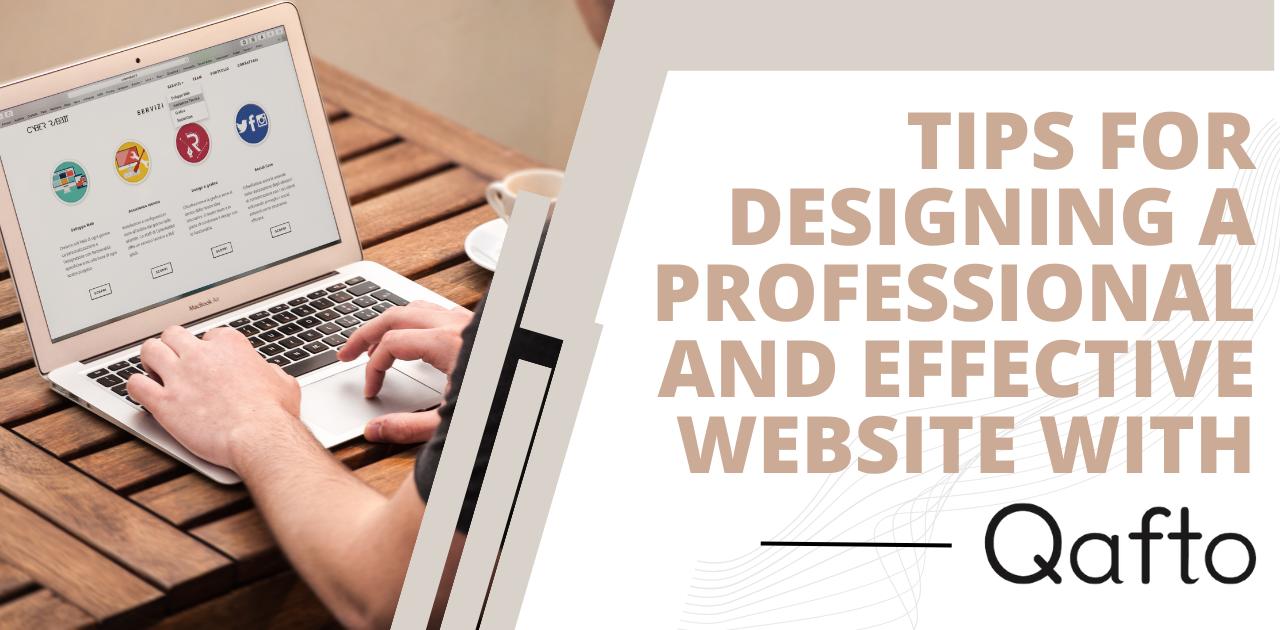Tips for Designing a Professional and Effective Website with No Code Website Builder, Qafto

Introduction
In today's digital age, having a professional and effective website is crucial for any business or individual who wants to establish a strong online presence. With the advent of website builders without coding like Qafto, designing a website has become easier than ever before. However, creating a website that is both professional and effective requires more than just a few clicks In this article, we will provide you with some tips on how to design a website that stands out and effectively communicates your message
1. Define your goals and target audience
Before you start designing your website, it is essential to define your goals and target audience Determine what you want your website to achieve, whether it is to sell products, generate leads, or provide information. Understanding your target audience is also crucial in designing a website that speaks to their needs and preferences Knowing your target audience will help you create a website that is both engaging and relevant to them.
2. Make it straightforward and simple to use.
One of the most important aspects of a professional and effective website is its ease of use Keep the layout and navigation of your website straightforward. Use clear and concise language, and make sure that your visitors can find what they are looking for quickly A cluttered or confusing website design can lead to frustration and increase your bounce rate
3. Make sure your website is mobile-friendly
Your website must be mobile-friendly because mobile devices now account for the bulk of internet traffic. A mobile-friendly website is responsive and can adapt to different screen sizes. Qafto provides responsive templates that can help ensure that your website looks great on any device
4. Use high-quality images and graphics
Visual elements can make a significant impact on the overall design of your website. Use graphics and photos of the highest quality that are appropriate for your content Avoid using stock photos that look generic and unoriginal. Using custom images and graphics can help your website stand out and make a lasting impression on your visitors.
5. Optimise your website for search engines
Search engine optimization (SEO) is an integral component of website design. Make sure that your website is optimized for search engines by using relevant keywords, meta tags, and descriptions This may enhance the visibility and ranking of your website on search engine results pages (SERPs).
6. Incorporate calls to action (CTAs)
Incorporating calls to action (CTAs) into your website design is an effective way to drive user engagement and conversions Use clear and compelling CTAs that encourage your visitors to take action, whether it's signing up for a newsletter, making a purchase, or filling out a contact form.
7. Update your website regularly
Regularly updating your website with fresh content and design can keep your visitors engaged and interested. Ensure that your website is up-to-date with the latest information, trends, and technology.
8. Monitor and analyze your website's performance
Monitoring and analyzing your website's performance can help you identify areas for improvement and track your website's success. Use website analytics tools to monitor your website's traffic, user behaviour, and conversion rates, and make necessary changes to improve your website's performance
9. Incorporate social media
Social media can help you connect with your visitors and increase your website's visibility Incorporate social media icons and share buttons on your website, and ensure that your social media profiles are up-to-date and relevant to your website's purpose
10. Test your website's functionality
Before launching your website, test its functionality to ensure that everything works correctly. Check your website's links, forms, and functionality on different devices and browsers Ensure that your website loads quickly and is easy to use.
11. Create clear and concise content
Your website's content should be clear and concise, easy to read, and informative Use headings, bullet points, and short paragraphs to make your content more readable. Ensure that your content is relevant to your website's purpose and free from errors.
Conclusion:
Designing a professional and effective website with Qafto requires careful planning and execution. By defining your goals and target audience, keeping your website design simple and easy to navigate, using high-quality images and graphics, optimising your website for search engines, and incorporating calls to action, you can create a website that stands out and effectively communicates your message. With these tips, you can design a website that engages visitors and drives conversions
